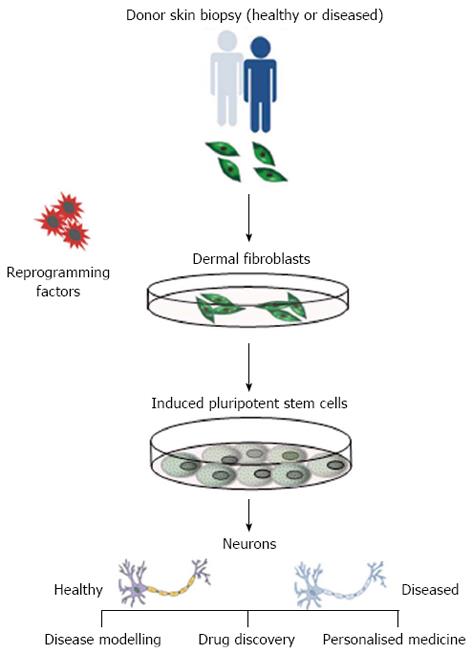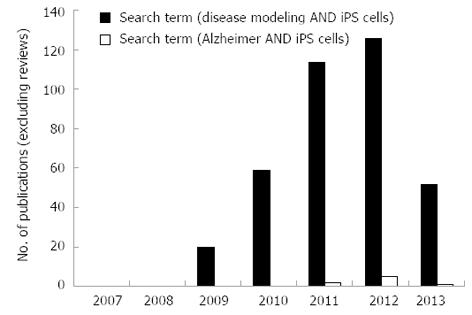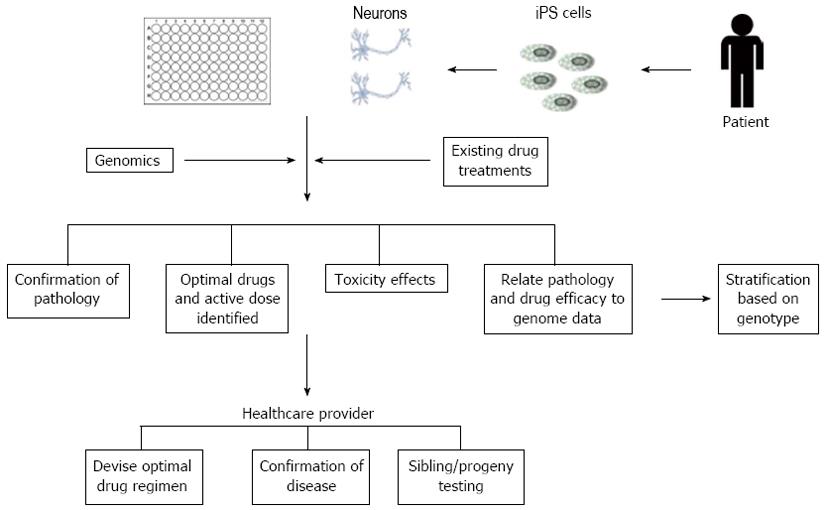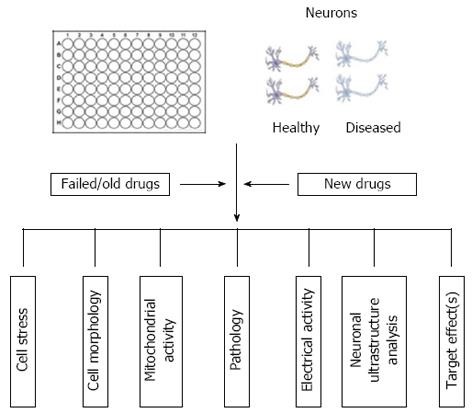Copyright
©2014 Baishideng Publishing Group Co.
World J Stem Cells. Apr 26, 2014; 6(2): 239-247
Published online Apr 26, 2014. doi: 10.4252/wjsc.v6.i2.239
Published online Apr 26, 2014. doi: 10.4252/wjsc.v6.i2.239
Figure 1 Isolation of disease specific induced pluripotent stem cells.
Reprogramming of dermal fibroblasts from patients with Alzheimer’s disease into induced pluripotent stem cells provides an infinite source of cells to apply directed differentiation protocols to generate disease-specific neurons that exhibit phenotypic disease traits. This presents a unique opportunity to utilise these cells in the exploitation of drug discovery, disease modelling and personalised medicine.
Figure 2 Publication statistics on original research papers using disease specific induced pluripotent stem cells between 2007 and 2013.
Analysis of the search terms [disease modeling AND ips cells NOT “review” (Publication Type)] (blue bars) and (Alzheimer AND iPS cells) (red bars) for research papers published on NCBI database (PubMed) between 2007 and 2013.
Figure 3 Example of some of the inputs and outputs in Alzheimer’s disease high content screening applications.
iPS: Induced pluripotent stem.
Figure 4 Example of how high content screening of patient-derived induced pluripotent stem cells could aid stratification of existing drug treatments and help identify genetic profiles associated with specific disease phenotypes.
- Citation: Mohamet L, Miazga NJ, Ward CM. Familial Alzheimer’s disease modelling using induced pluripotent stem cell technology. World J Stem Cells 2014; 6(2): 239-247
- URL: https://www.wjgnet.com/1948-0210/full/v6/i2/239.htm
- DOI: https://dx.doi.org/10.4252/wjsc.v6.i2.239












